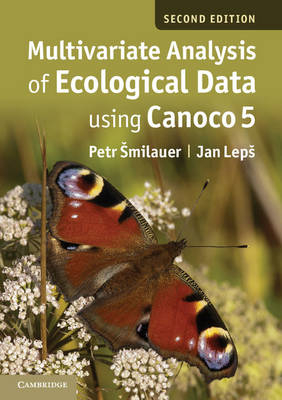
Multivariate Analysis of Ecological Data using CANOCO 5
Cambridge University Press (Verlag)
978-1-107-69440-8 (ISBN)
This revised and updated edition focuses on constrained ordination (RDA, CCA), variation partitioning and the use of permutation tests of statistical hypotheses about multivariate data. Both classification and modern regression methods (GLM, GAM, loess) are reviewed and species functional traits and spatial structures analysed. Nine case studies of varying difficulty help to illustrate the suggested analytical methods, using the latest version of Canoco 5. All studies utilise descriptive and manipulative approaches, and are supported by data sets and project files available from the book website: http://regent.prf.jcu.cz/maed2/. Written primarily for community ecologists needing to analyse data resulting from field observations and experiments, this book is a valuable resource to students and researchers dealing with both simple and complex ecological problems, such as the variation of biotic communities with environmental conditions or their response to experimental manipulation.
Petr Šmilauer is Associate Professor of Ecology in the Department of Ecosystem Biology at the University of South Bohemia. His main research interests are: multivariate statistical analysis, modern regression methods, as well as the role of arbuscular mycorrhizal symbiosis in plant communities. He is co-author of the multivariate analysis software Canoco 5, CANOCO for Windows 4.5, CanoDraw, and TWINSPAN for Windows. Jan Lepš is Professor of Ecology in the Department of Botany at the University of South Bohemia, and in the Institute of Entomology at the Czech Academy of Sciences. His main research interests include: plant community biology, statistical analysis in the field of ecology, as well as the studies of species diversity, the role of functional traits in plant community ecology and ecology of hemiparasitic plants. Together with P. Šmilauer, he regularly offers international courses on multivariate statistics.
Preface; 1. Introduction and data types; 2. Using Canoco 5; 3. Experimental design; 4. Basics of gradient analysis; 5. Permutation tests and variation partitioning; 6. Similarity measures and similarity-based methods; 7. Classification methods; 8. Regression methods; 9. Interpreting community composition with functional traits; 10. Advanced use of ordination; 11. Visualising multivariate data; 12. Case study 1: variation in forest bird assemblages; 13. Case study 2: search for community composition patterns and their environmental correlates: vegetation of spring meadows; 14. Case study 3: separating the effects of explanatory variables; 15. Case study 4: evaluation of experiments in randomised complete blocks; 16. Case study 5: analysis of repeated observations of species composition from a factorial experiment; 17. Case study 6: hierarchical analysis of crayfish community variation; 18. Case study 7: analysis of taxonomic data with linear discriminant analysis and distance-based ordination methods; 19. Case study 8: separating effects of space and environment on oribatid community with PCNM; 20. Case study 9: performing linear regression with redundancy analysis; Appendix A. Glossary; Appendix B. Sample data sets and projects; Appendix C. Access to Canoco and overview of other software; Appendix D. Working with R; References; Index to useful tasks in Canoco 5; Index.
| Zusatzinfo | 24 Tables, black and white; 72 Halftones, unspecified; 101 Line drawings, unspecified |
|---|---|
| Verlagsort | Cambridge |
| Sprache | englisch |
| Maße | 175 x 269 mm |
| Gewicht | 730 g |
| Themenwelt | Mathematik / Informatik ► Mathematik ► Computerprogramme / Computeralgebra |
| Naturwissenschaften ► Biologie ► Botanik | |
| Naturwissenschaften ► Biologie ► Ökologie / Naturschutz | |
| ISBN-10 | 1-107-69440-X / 110769440X |
| ISBN-13 | 978-1-107-69440-8 / 9781107694408 |
| Zustand | Neuware |
| Haben Sie eine Frage zum Produkt? |
aus dem Bereich


